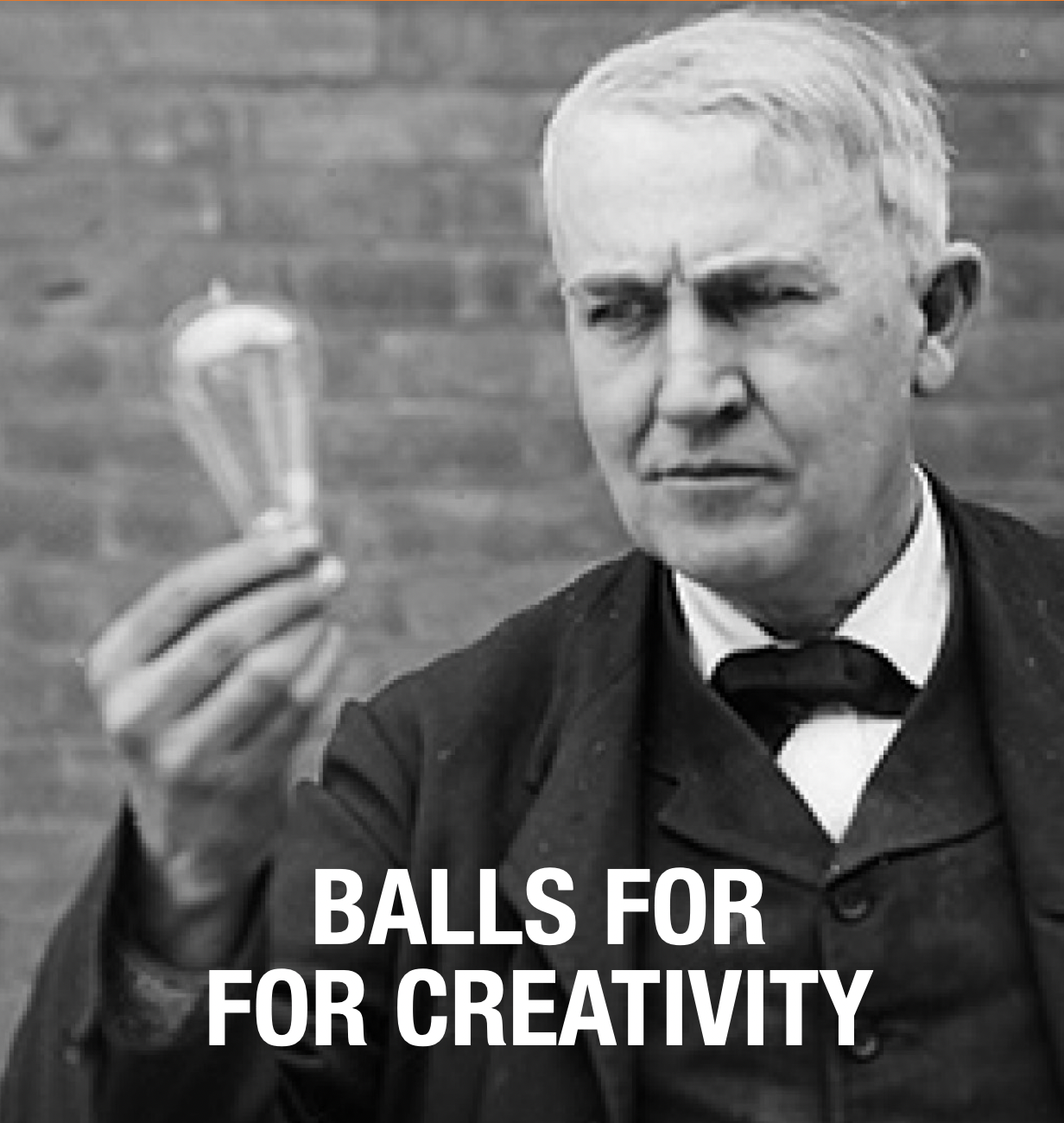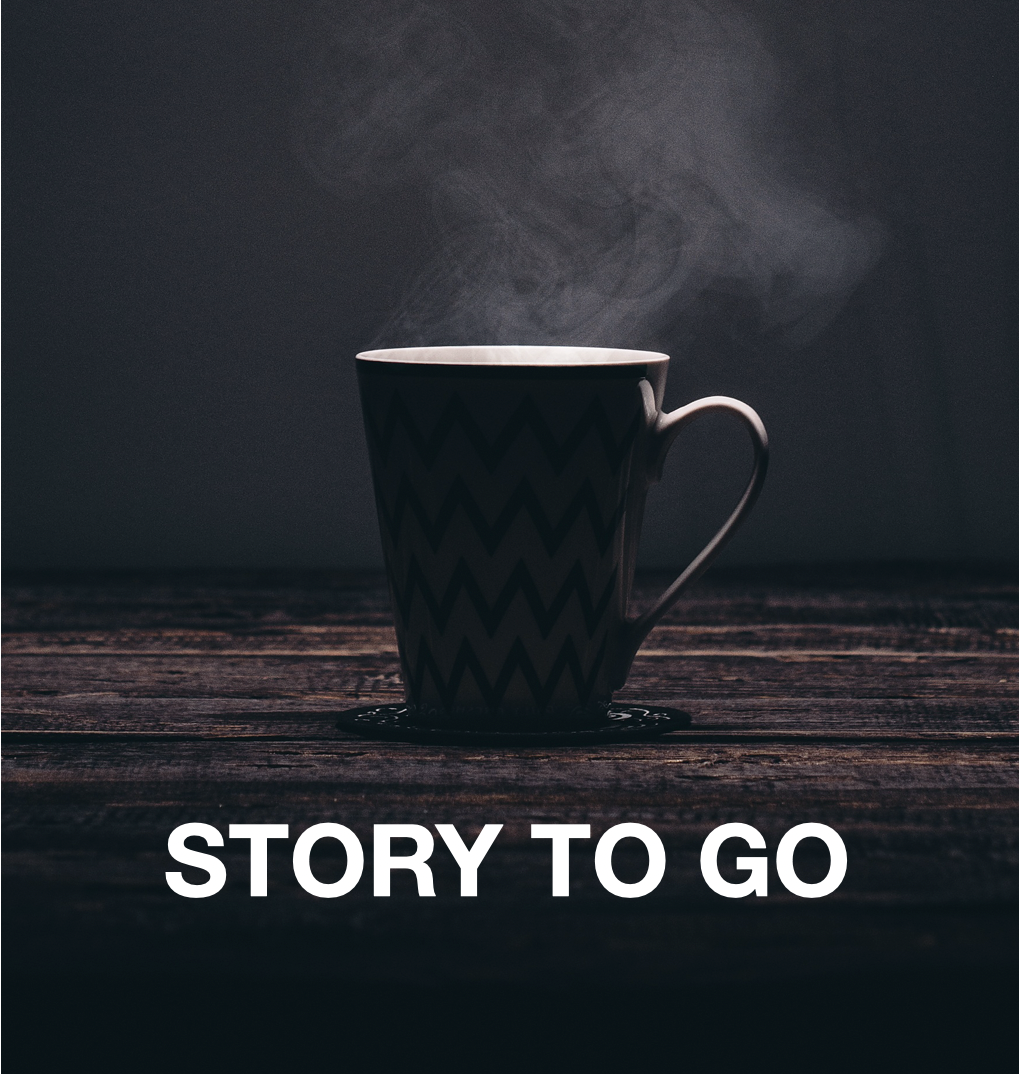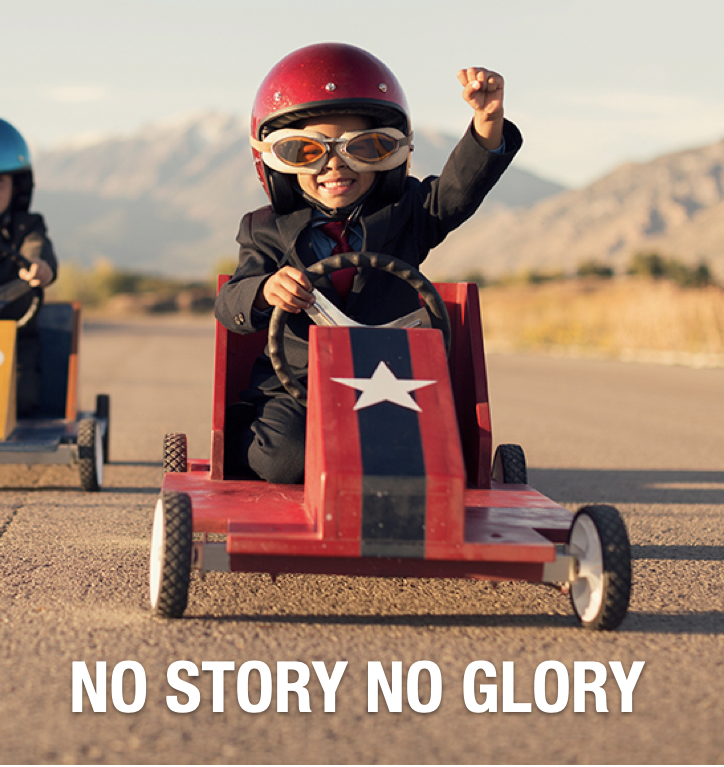The balls of Thomas Edison as source of creativity Image by StockSnap from Pixabay Thomas Edison invented the light bulb, but also together with William Kennedy Dickson in 1888, he created the first movie projector, the kinetoscope, and one of the first electric chairs with his employee Nikola Tesla (yes that one!) and much more. Pretty impressive. So what was his source of creativity? The power nap. The story goes that Edison took (at least) one nap a day while holding a ball in each hand. Below the ball was a metal pan underneath. His reasoning was that if he fell asleep, the balls would slip from his grasp and hit the pan with a loud noise, causing him to wake up abruptly and could write down his elusive, creative thoughts he could otherwise not grasp. I instantly recognized the method and wondered if research had been done to verify. Indeed there was: the Massachusetts Institute of Technology. They have found that during the ‘half-lucid state’, just as we fall asleep, there is a phase known as N1 – or sleep stage 1 – with non-rapid eye movement (not-REM) and that is exactly the moment of great creativity and insight. Edison wasn’t the only one using power naps. Famous power nappers are Winston Churchill, Albert Einstein, Aristotle Leonardo da Vinci and Salvador Dali to name a few. They also used it to boost creativity and insights. It a great way to start the rest of your day. Fresh and clear. The recipe: One cup of coffee and set the timer for 20 minutes. Happy Powernapping! Sources: New Scientist The Guardian on power nappers Image inspired by Salvador Dali
The power of storytelling, coffee (!) and 4 ingredients to be(come) a story creator.
The power of storytelling and 4 ingredients to be(come) a story creator. Image by StockSnap from Pixabay The story of coffee Long time a go, around 850 BC an Arab goatheader named Kaldi noticed how his goats acted strangely. When he looked what caused it, he saw they were eating certain berries. Intrigued by it, he tried them himself and was excited by the effect it had on him It didn’t take the Arabs long to figure out how to dry and boil the berries in what they called “qahwa a shortening of qahwa al-bun ‘wine of the bean’.” After that the Turkish used this brew as well and with them it travelled to the French who give the brew the name “cafe” and from there it was picked up by the Dutch who named it koffie and were responsible for making it enter the English language as “coffee”. From now on chances are, you’ll remember this story when you drink coffee and probably tell it is well. Stories made humanity Storytelling is as old as human civilization itself. It likely began with early humans sharing their experiences, knowledge, and wisdom through oral traditions, passing down stories from generation to generation. These stories served various purposes, such as educating others about survival skills, explaining natural phenomena, preserving cultural heritage, and entertaining communities. Our addicted to stories Why are we humans so addicted to stories? And how come they are so powerful. Think of the Bible or Koran, or the stories of Buddha. Or Harry Potter, Lord of the rings. These aren’t just stories, these are ‘religions’ (religions meant ‘that what binds’ from the Latin religio(n-)). So what is it? Well, let me highlight some reasons, first of all: We grew up with stories One of the reasons we like stories is we grew up with the. When we were children, lots of stories have been told to us. And boy did we like to listen to them! And as it is part of our childhood, it is also programmed deeply in our brain and we probably get an instant good feeling when we hear somebody tell a story. Good stories create images Storytelling is very graphical and that sticks; good storytelling creates images in our minds when we listen to them. That way you don’t have to process the words, you just look at the images as the story continues. That’s the power of paintings as well, they tell a story without words, so we can absorb it, without thinking. Reverse engineering of a story Actually, doing the reverse, is telling a story. Think of an image or scene and describe what you see. That’s a good way to tell stories, and it is amazing how the show in your brain works: If someone tells us about how delicious certain foods were and our sensory cortex lights up. If it’s about motion, our motor cortex gets active. Scientists found that the brain sees no difference between thinking about it or actually experiencing it. The same parts of the brain light up! Just imagine what a story can do. Stories invest in the listener Telling stories also means putting effort into it as a proof you want to make the other understand (it’s investing in the listener). That is the most pure form of engagement. The true meaning of engagement is occupy, attract, or involve (someone’s interest or attention) or engage someone in (cause someone to become involved in a conversation or discussion). But there’s more, whenever we hear a story, we look for relations to one of our existing experiences. That way we can much quicker understand a story. At the same time the brain of the teller and the listener synchronize, becoming a bit as one… The power of metaphors That’s why metaphors work so well with us. While we are busy searching for a similar experience in our brains, we activate a part called insula, which helps us relate to that same experience of pain, joy, disgust or else. Besides, it makes it easier to understand, no effort’s necessary, no decoding. Telling stories, instead of giving solutions, works so well because of this. The relating to stories and the synchronization of brains, makes that telling the context of an idea as a story makes that the listener is creating the idea himself as part of her of his own experience (leave your ego at home and don’t try to claim the idea). Three steps in creating a story Now I hear some people say: “I am not good at it, I cannot tell stories” but don’t worry, Yes you can. Anyone can. Try to imagine the idea, the point, the scene, the thing you want to make as a destination. Go back to where you are/stand and tell the story as the road to that destination. OK, 3 bullet points, but told as a story. A good way to become a storyteller is by: Image by Tumisu from Pixabay Inspiration for stories (and creativity): First: Be curiosity. Ask questions, learn, read and listen more, watch documentaries, series and movies, listen to the lyrics of music, open your eyes and look around (you get the idea). Second: Experience stories, listen to them, be open for new and weird ones Third: Think in images and feelings Fourth: Learn to tell a good story and that’s by doing, observing the listener. Hear with your third eye, see with your third eye en feel with all your senses. You know when it resonates. And remember: “Don’t be the traveler but focus on your listener being a passenger”.
Why bullets kill and stories live forever
Why bullet points kill and stories live forever (a short story) Image unidentified In the world of PowerPoints (and Keynotes), there’s a timeless battle between the practicality of bullet points and the profound impact of storytelling. You see, bullet points appeal to the logical left brain, offering a structured but sterile way to convey information, but also boring and quickly forgotten. Yet, it is storytelling that truly captures the essence of human connection, engaging the emotional right brain with its authenticity and empathy. Important to realize, it’s not just about what we say, but how we make others feel. Storytelling transcends mere data points, creating a lasting impression that resonates with our deepest desires and aspirations. By tapping into the power of narrative, we can inspire action, foster trust, and create engagement. While bullet points may appeal to the left brain’s logical sensibilities, it is the right brain—the seat of creativity, emotion, and imagination—that truly holds the key to lasting impact and remembrance. That’s the power of storytelling, and it’s what sets great presenters apart. Tip: To avoid a cold turkey, create a structure in ‘bullet points’ and transform that structure into a story. Use images and put in only words the audience needs to remember, oh and practice in front of a mirror 😉 #nostorynoglory
Master the Art of Business
Master the Art of Business: Transform Logic into Emotion Image from some Ai In the world of business, the significance of emotion transcends the confines of conventional logic. Logic serves its purpose, undoubtedly – navigating us from point A to B, laying the groundwork for market entry. Yet, in a landscape teeming with competitors fixated on mere table stakes, the path to true success requires a departure from the status quo. Pouring more resources into media, SEO, and SEA, and crossing fingers for mere visibility, is a futile strategy. We’re irrational creatures, triggered by emotions Human decision-making, despite our belief in rationality, is inherently irrational. Descartes, among others, might have envisioned us as rational beings, but we’re rational creatures only when there’s an emotion grabbing for our attention. As David Ogilvy wittingly notes, advertising without emotional impact is like to a tall ship drifting in the dark… David Ogilvy avec pipe Imagination emerges as the true catalyst for business transformation. While understanding logic forms a foundational base, true innovation and emotional resonance stem from thinking beyond the ordinary. Creativity, a manifestation of imagination, becomes the beacon leading us to uncharted territories. Boosting business, often counterintuitive, is grounded in applied rationality. Perfection in products or services is a precondition, but the real differentiator lies beyond a mere highlight of specs. Fearlessly venturing outside comfort zones unlocks the magic inherent in authenticity. The essence of a brand lies in unraveling the stories behind products or services – the narrative that resonates emotionally. Master the art of business For those seeking inspiration mastering the art of business, unconventional strategies await exploration: 1. Snoitnevnoc (Challenging Conventions (written backward ;-)): Flip the script by challenging assumptions and reversing typical thought processes. Instead of pondering how to enhance your brand, consider what could potentially harm or devalue it. 2. CCT (Customer-Centric Thinking): Elevate your brand by creating value that transcends current market offerings. Understanding both existing and potential customer needs becomes the compass guiding this approach. 3. ERRC (Eliminate-Reduce-Raise-Create): A holistic strategy involving the elimination of unnecessary factors, the reduction of elements below industry standards, the elevation of specific aspects beyond norms, and the creation of entirely new factors through innovation. This method sets companies apart, attracting new customers in an otherwise crowded market. Some examples of companies wo did exactly that: Blendtec: Humor and Relatability: Blendtec, a blender manufacturer, gained widespread attention through their “Will It Blend?” video series. The humorous videos feature the blending of unusual items, from iPhones to golf balls. It’s one of my all-time favorites. The emotional appeal lies in the entertaining and unexpected nature of the content, creating a memorable and shareable brand experience. This unconventional approach helped Blendtec massively increase brand visibility and sales. https://www.youtube.com/watch?v=0H8VLjFmgYo Zappos: Customer Happiness and Company Culture: Zappos, an online shoe and clothing retailer, focuses on creating an emotional connection through exceptional customer service and a unique company culture. Their emphasis on customer happiness, embodied in initiatives like surprise upgrades and personalized interactions, goes beyond transactions. By fostering positive emotions, Zappos has built a strong brand reputation and customer loyalty. MailChimp: Creativity and Playfulness: MailChimp, an email marketing platform, stands out by infusing creativity and playfulness into its branding. From quirky marketing campaigns to their playful mascot, Freddie the chimpanzee, MailChimp appeals to the emotional side of users. The brand’s unconventional and approachable image has contributed to its popularity, especially among creative professionals and small businesses. I hope you found this an inspiring story and sparked inspiration that propelled you forward in your thinking and doing. When you’ve seen the light but still want more or an extra ‘rational’ to get started, contact me here or here: +31618987510. Do Good,The Hoff
Less Profit, More Happiness
Less Profit, More Happiness It sounds like a contradiction, but it’s not. The ideas is simple: Companies should define a profit ceiling. Anything they earn above, is used for positive investment like education, sustainability, pollution, improve farmer’s prices, equal opportunities, culture, the community, you get the idea. Now what happens? Employees who work for companies like that are proud (purpose) and more productive, more creative and willing to share ideas. Because they’re happy and proud, they will talk about it with at parties, social media, friends and family, (company branding) and attract new, like minded employees. For Social Media, these companies have more to tell than just about their products or servies. They can show their ‘human’ side, which is more suitable for the channel and more interesting, which creates positive awareness. Consumers are more inclined to buy products from companies that do good for the world and if the quality is good, will probably talk about it plus there’s already an increased visibility, so sales go up. Bottomline: happy people (employees, suppliers, consumers, stakeholders), sales go up, production cost go down, profit goes up…. so more money that’s going to be positively invested. In other words, we should invest in happiness. It’s (almost) a perpetuum mobile.
9 Quantum Creativity Strategies
9 Quantum Creativity Strategies If the brain is a muscle, and it is possible to train it or even to stretch it. Here are some interesting ways to train the brain: Strategy 1. Fail tremendously No creative succeeds without first failing – as fails are part of the process of testing one’s assumptions. Each failure you encounter will actually supercharge your creativity by generating new information and remodeling the problem that needs to be solved. Strategy 2. Define The Problem Many people jump jump straight to solutions which result often in finding the wrong solution or a superficial one for the wrong problem. I call it the hierarchy pf problem. In most cases there’s a problem creating the problem, creating the problem. The art of defining the problem is going to the root, removing the ‘trouble’ (=from from the French word troubler, meaning ‘cloudy’), that’s a creative process on its own and the solution will present itself in creativity. Strategy 3. Challenge Your Creativity Assumptions It’s natural and necessary to make assumptions about the reality of our everyday world. But the result might be that we see what we expect to see. Challenging your assumptions is a catalyst for creativity. It allows to look beyond what is obvious or accepted. Truly creative people in all fields automatically tend to challenge both their own assumptions, and the commonly accepted ones. Strategy 4. Alternative Perspective We’re stuck in patterns and habits. A great way to kick start creativity is to look at a problem from the vantage point of another profession/person/entity. How would a mechanical engineer look at it, an architect, a product designer, a chef cook, your mother? This approach can lead to some remarkable creative insights and breakthroughs. Strategy 5. Accept Ambiguity In general people don’t like things that seem to be vague, or could have more than one meaning or application. As a result they tend to be rigid and highly predictable thinkers. Not creative. People who can think ambiguously are fluid and flexible thinkers. The ability to think ambiguously can yield amazing creative insights. This is ability is experienced (and built) when you indulge in wordplay or humor. Strategy 6. Read, listen, watch more An excellent way to build your creative muscles is to read, listen, watch and explore outside your normal area of interest. This can be especially useful when you are struggling to solve a creative problem. Read comics, Science Fiction or just magazines, listen to scientific, philosophical, stand-up comedy podcasts, stroll the Internet, walk through a mall, and keep the ‘problem’ in mind and find these creative solutions. Strategy 7. Walk a mile in their shoes We have the tendency to project things on ourselves and our own experiences. By changing your point of view in a literate way and putting yourself in the shoes of the other, creates a complete new perspective of things. I often use my mother and try to look at the problem or solution from her perspective, but in general, just don’t think as yourself. Strategy 8. Take a nap Creative thinking best occurs when your brain is in certain states called alpha and theta, they are the source of inspiration and creativity. That’s why many people (Newton, Einstein, Picasso) have creative ah-ha experiences during a nap, a stroll, or some other mentally-relaxing activity. Strategy 9. Meditate Silence your thoughts. It’s between the silences where crazy ideas are born. There are many ways to meditate and it easy. Just focus on breathing in and letting out slowly for example, or feel your heartbeat, listening to birds and sound of the wind, remove the ‘voice’. Or go running or biking and get into a flow.






